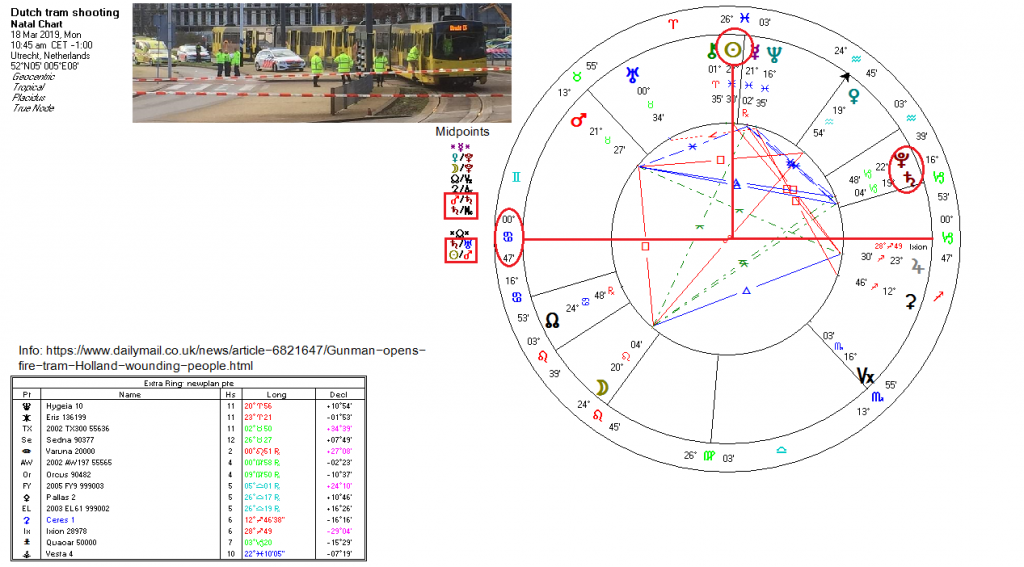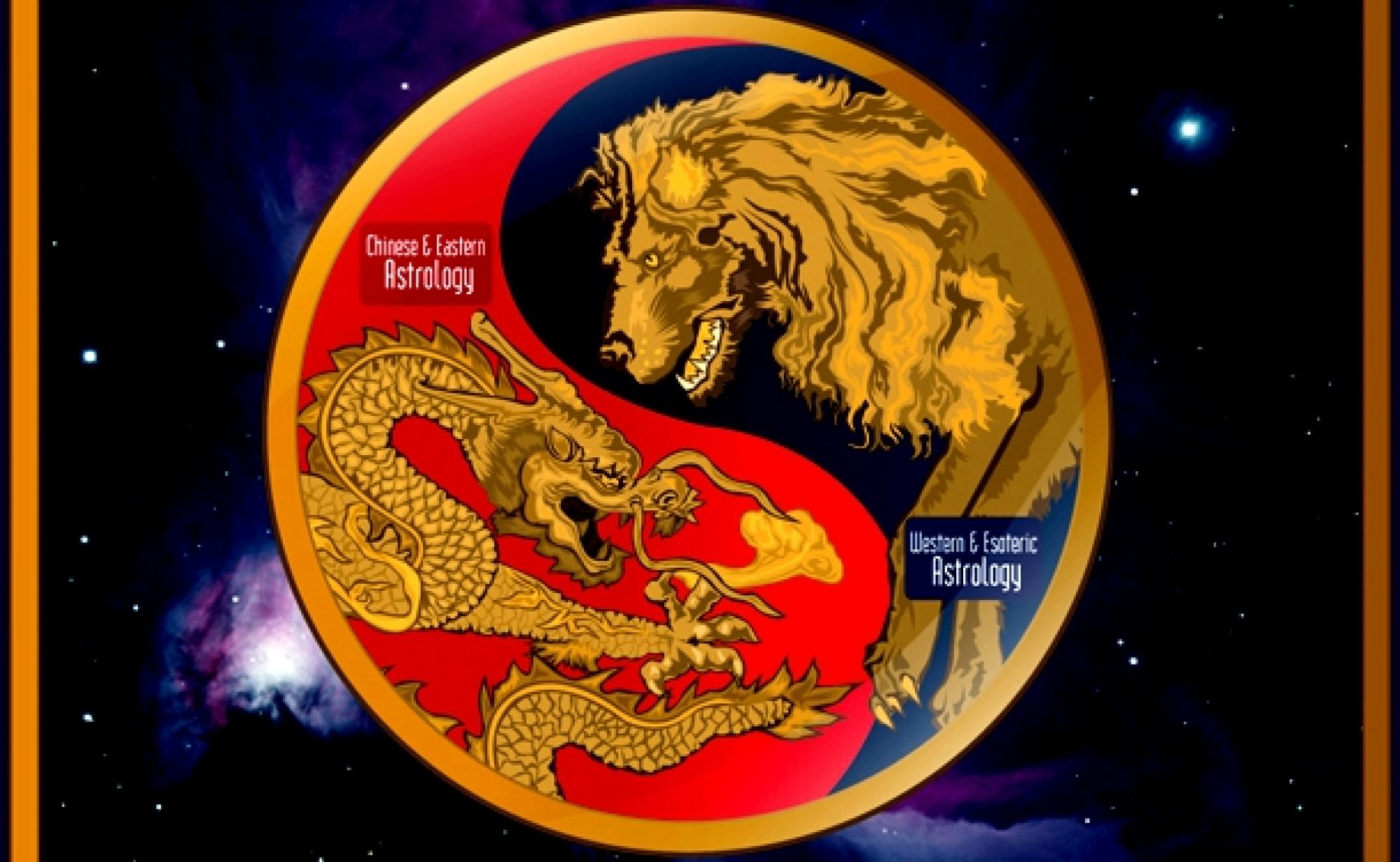Part of my work in recent years has involved tracking the newly-discovered dwarf planets through the horoscope and seeing what meanings they carry for us. The last article on Ceres follows on from that work. All of the other dwarf planets, at least to our current understanding of them, lie outside the orbit of Neptune. And as it turns out, a great many of them are related to Neptune via their orbits by their orbital resonance with Neptune.
Pluto is one such dwarf planet that ‘resonates’ with Neptune, and Ixion is another. In fact, there are at least eight planets of the small variety (some people don’t like the term ‘dwarf’) that fall into the same category as Pluto. I call them ‘plutinos’.
Just what is a plutino, then? I have my own classifications for these little planets. Pluto has an orbital resonance of 2:3 with Neptune, as do all the plutinos, meaning that for every two orbits of Pluto Neptune makes three. This is the simple definition of the relationship. And that relation is stable, meaning that it does not decay over time. To add more to the definition:
Stabilization may occur when the two bodies move in such a synchronised fashion that they never closely approach. For instance:
The orbits of Pluto and the plutinos are stable, despite crossing that of the much larger Neptune, because they are in a 2:3 resonance with it. The resonance ensures that, when they approach perihelion and Neptune’s orbit, Neptune is consistently distant (averaging a quarter of its orbit away). Other (much more numerous) Neptune-crossing bodies that were not in resonance were ejected from that region by strong perturbations due to Neptune. There are also smaller but significant groups of resonant trans-Neptunian objects occupying the 1:1 (Neptune trojans), 3:5, 4:7, 1:2 (twotinos) and 2:5 resonances, among others, with respect to Neptune.
So, a plutino is any planetary body that has a 2:3 orbital resonance with Neptune. And there are a few that have been named, from the largest to the smallest: Pluto, Orcus, Ixion and Huya. There are others that would likely be classified as dwarf planets, but have yet to be named, seven in all. The plutinos all have an orbital period of around 246 years, on average. I call the other small planets with other orbital resonances ‘plutoids’ (Pluto-like bodies) and the ones without resonances ‘non-resonants’. The reason I make the differentiation is because the planets of the various classes in terms of resonance or not all have similar astrological characteristics within their classifications.
The characteristics and effects of the plutinos in astrology are all similar. They all follow on the orders of ‘King Pluto’. Pluto is the lord of the underworld, after all. Pluto rules over death, regeneration, major endings and separations. The death referred to is not usually a physical death unless it is found prominent in an event chart. Instead, ‘death by Pluto’ refers to the end of attachments, to be more Buddhist about it. Pluto helps us to let go of our sentiments, the ones that hold us back from reaching our full spiritual potential. It operates primarily in the realms of emotions and lower mind. Pluto has the attributes of the serpent, in that he acts as a healer. He is the keeper of a quest object, the arbiter of unveiled wisdom, which the quest object represents. He ushers us into our own personal underworld, where we are ‘invited’ to rediscover ourselves, in a spiritual sense. All of the plutinos, then, have similar attributes to those just listed about Pluto, but each in their own way.
To briefly list those characteristics and effects of the other plutinos, Orcus is the ‘drill instructor’ who keeps us on track and reminds us of our ethics and vows to ourselves. Huya reminds us not to be too extreme in our beliefs, to rein ourselves in when we go too far out of our way. And as to Ixion? He is the ‘divine malcontent’, who reminds us not to take ourselves too seriously, and who confronts us as to any feelings of hopelessness we might harbor. All of them challenge our boundaries, which in the end are largely learned behaviors. They thus address our attachments and sentiments and carry a gift at the end of experiences through their influence. They all bring healing, in their way, whether we see it that way while we are going through the experience or not. To get an idea of how Ixion operates we can start with his mythology.
The mythology of Ixion is not a pretty affair. He was bound to a flaming wheel for eternity in Tartarus, the most tortuous of the underworld realms, for his misdeeds. Those misdeeds included reneging on a debt and a promise, killing of kin, trying to seduce the wife of Zeus, and just generally being an ungrateful and irredeemable sort. Ixion was not a pleasant presence to be around. He had driven himself mad through his misdeeds, and hence saw no path to redemption. Nor did anyone else. Therein lies a clue to what he represents in a chart and his actions. We might summarize what he addresses in a chart and by his transits/directions as follows:
- Feelings of hopelessness, of worthlessness, of, “What’s the use?”
- Addressing feelings of revenge, ingratitude, lust, murderous rage, etc.
- Overcoming self-inflicted mental torment
- Teaching gratitude for help, benefactors and what one has
There is always a touch of madness with Ixion. This especially shows through in event charts, which is what has prompted this article. In event charts we had a recent example of this madness, with the shooting in Utrecht, the Netherlands. The chart is below (bigger):

In that chart we see Ixion conjunct the Descendant, the latter representing the attacker. The shooter had a history of drug abuse, abusive behavior, a pending verdict for rape, and a criminal past for petty crimes. There is conjecture is that he was acting out of vengeance. The Sun is square Ixion in the chart. The Venus/Mars square in the chart suggests a crime of passion. The Ascendant of the chart was at the 0° Cancer Aries point, suggesting a family connection, and the ruler (the Moon) was square to Mars, suggesting revenge as a motive. The Ixion/Horizon connection shows the instability of the man, the tortured mentality and his careless attitude about the outcome. He wasn’t seeking to make a statement, as we saw with the recent New Zealand shootings. His motive was likely far more personal and close to home (Cancer) even though it affected the masses (also Cancer).
There was yet another example in an event chart with the hijacking of a school bus in Milan. That chart is below, estimated (bigger):

I don’t have an event time for the chart, but that is not the most important facet for our discussion. The main point is that, as in the Utrecht event, the Sun is square Ixion, represented the egos involved and highlighting the sense of hopelessness or, “What’s the use?” We also find a similar setup with the recent tragedy in New Zealand, in which Ixion was in the 7th house, opposite the Moon, and squared by the Sun/Mercury/Midheaven conjunction, forming a t-square. Whereas normally the orb would be tighter for Ixion (one or two degrees at most) with the Sun and Moon a wider orb is allowed. The bus driver had that sense of hopelessness, because he had lost three daughters in transit across the sea when the boat they were on sank. He wanted to make a statement (Gemini again, as in the case of Christchurch) about the immigration laws in the EU and especially in Italy since Salvini has been Interior Minister.
The point of the preceding examples is to highlight the sense of hopelessness and madness in such events. In fact, since Ixion has been in the few degrees preceding solstice and equinox points (Aries points) for the past couple of year, one can track a sense of craziness in the days around those in terrorist events and the like because the Sun is transiting in hard aspect to Ixion in those days. A little research will reveal the truth of it. But Ixion does have its higher, divine purpose, too.
One of the more revealing ways that Ixion functions – or any planet for that matter – is to find people who have said planet on their horizon. Especially if the planet is unaspected by another planet, then it has a tendency to ‘speak’ through a person. It doesn’t matter if the planet is on the Descendant or Ascendant, for that axis defines the basic manner in which a person presents and relates. With Ixion on the horizon, some very interesting characters emerge. In politics we have the likes of Berlusconi in Italy, Josep Tito of Yugoslavia and Paul Keating in Australia. In music we have Courtney Love, Shirley MacLaine and Ivan Rebroff. In literature we have Pierre Bost, Riccardo Bacchelli and Christian Gellert. In film there is Federico Fellini, along with Shirley MacLean again. These people all defied convention. Most of them are/were fearless in their speech and many of them were subject to and engaged in various peccadilloes.
Ixion on the horizon can produce a biting wit, as in the case of Paul Keating, or gaffes as in the case Berlusconi. It is often controversial, as in the case of Fellini, but at the same time revolutionary. It is the touch of madness that lends itself to genius. But it also causes more than its fair share of relationship troubles because of its tendency to induce a person to defy conventions. It produces a person who is rarely content with their lot for very long, unless their life is one of constant variety and challenges. Like Pluto, it also gives unusual force to one’s expression, and often shows itself in a prodigious output of work. All of the plutinos carry that aspect of power and defiance.
Some very beloved comedians also have/had Ixion well-placed in their charts. It gives a unique outlook on life and the ability to laugh at oneself and at life. It also produces fearless performers. Examples of such are Robin Williams, who had Ixion conjunct Neptune, opposite Jupiter, forming the base of a t-square with a Mars/Uranus conjunction at the apex – a fearless and extraordinary combination – and certainly careless of any sense of the conventional. Jonathan Winters is another, who had Ixion conjunct the Moon and opposite Uranus, another versatile and original performer. Spike Milligan had Ixion conjunct Mars and the Vertex and square Jupiter. John Cleese has Ixion in his first house trine his Midheaven and opposite Eris. Think Fawlty Towers. Peter Sellers was another performer with Ixion opposite Uranus and in a wide conjunction with the Sun, the latter also conjunct Mars. Dr. Strangelove. Perhaps from these few comedic performers we get the picture: originality, defiance of convention, biting and quick wit, ability to laugh or poke fun at any situation, fearless in presentation – and most of them suffered from depression at some point or another – an unfortunate side-effect of the planet and reflective of the hopelessness of Ixion.
Wherever Ixion is placed in our chart we are shown where we need to learn to laugh, to not take ourselves seriously, to find ‘the fine line between insanity and genius’, and where perhaps we drive ourselves and others crazy. If there are only conjunctions, squares and oppositions to Ixion it adds a particularly strong note of tension and instability to one’s nature. If such a state of affairs is handled well then it can contribute to some very striking and prodigious work, outside of the norm, but care has to be taken to maintain a balance in one’s life. If there are only trines and sextiles then it gives quite a nice blending of the unconventional with the status quo. If there are both trines and squares it can give the most profound insight into the human condition and the ability to express it in a way that it advances the public discourse. Like him or loathe him, Ixion deserves our understanding. Experience through his influence gives us an opportunity to look at our self-redemption. But before we go, here’s a little sample of Ixion in action:
Featured pic from Parade

